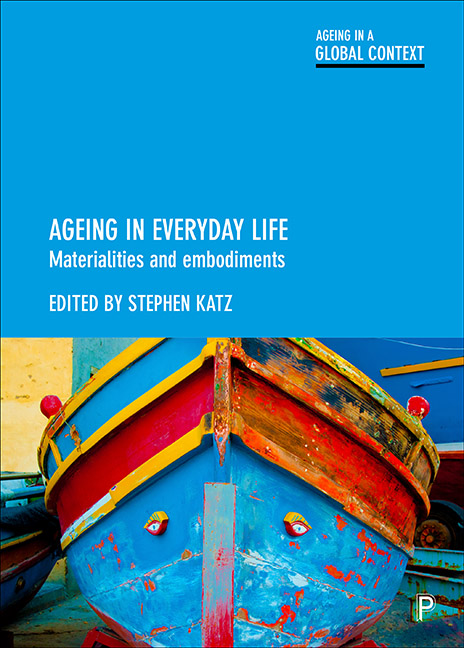Two - Things and possessions
Published online by Cambridge University Press: 22 April 2022
Summary
Introduction
The life course is commonly charted by intangibles, as a progression of roles, statuses, relationships, emotions, identities and levels of wellbeing. And these occur within even larger constructs that we call social institutions (such as work, family, fashion, education, economy). These intangibles nonetheless have real force and real consequences. Yet the life course also has a physical, material reality: it is enacted and embodied with things, it proceeds in the service of things, and the passage of time propels people towards the consumption of things. These are not only the objects and furnishings of everyday life that are held by oneself or others, but also public affordances, infrastructures and landscapes.
To propose that the life course is enacted by things is to claim that this material is something more than mere contexts, instruments, adjuncts or accessories. Childhood is unthinkable without toys, just as adulthood is unthinkable without keys. People's belongings manage age-appropriate presentations of themselves: in their bodies, in their social roles, in their homemaking, at leisure. For example, ‘parenthood’ is an abstraction until made concrete by acts that maintain a physical environment for children and continually furnish it with goods for daily needs. Material resources are deployed in order to be someone, whatever that station in life may call for. Material resources spin a story about the self and are the means by which to evaluate how well life is going. Wrote Sartre: ‘The totality of my possessions reflects the totality of my being. I am what I have’ (1956, p 591).
Although eclipsed by a frequent emphasis on roles, relationships and especially health, research on later life has not overlooked material culture. For example, there has been considerable attention to the built environment (Golant, 2015), to the places where elders reside in rooms, buildings and neighbourhoods, even including outdoor places such as gardens (Milligan and Bingley, 2015). Assistive devices for health and self-care are an important focus of geriatrics. Elders’ interactions with consumer electronics (so-called ‘tech’) is an active area of research (Fisk et al, 2009). Selected categories of objects have come in for study, for example, in this volume, clothing and automobiles (see Chapters Eight and Ten). Public amenities and attractions may also have significance in later life, such as museum objects (Jacques, 2007).
- Type
- Chapter
- Information
- Ageing in Everyday LifeMaterialities and Embodiments, pp. 29 - 44Publisher: Bristol University PressPrint publication year: 2018



